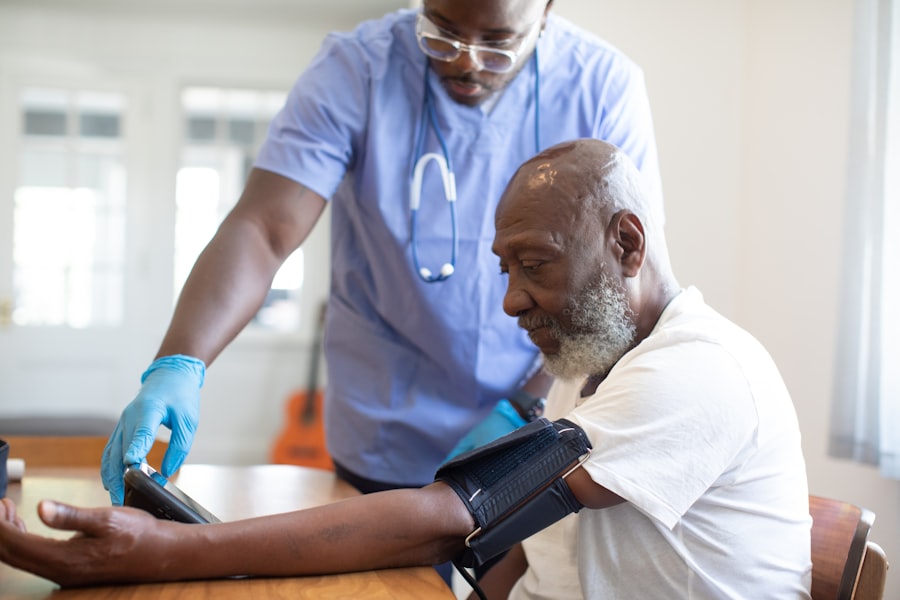Phase 3 clinical trials represent a critical juncture in the drug development process, serving as a bridge between the laboratory and the marketplace. These trials are typically conducted after a drug has shown promise in earlier phases, specifically Phase 1 and Phase 2, where initial safety and efficacy are assessed. In Phase 3, the focus shifts to evaluating the drug’s effectiveness in a larger population, often involving thousands of participants across multiple sites.
This stage is essential for determining whether the benefits of a new treatment outweigh its risks, thereby providing the necessary data for regulatory approval. The significance of Phase 3 trials cannot be overstated. They are designed to confirm the findings from earlier studies and to provide a more comprehensive understanding of how a drug performs in a real-world setting.
This phase often involves randomized controlled trials (RCTs), which are considered the gold standard in clinical research. By comparing the new treatment against a placebo or an existing standard of care, researchers can draw more definitive conclusions about its therapeutic value. The outcomes of these trials not only influence regulatory decisions but also shape clinical practice and patient care.
Key Takeaways
- Phase 3 clinical trials are critical for confirming the safety and efficacy of new treatments before market approval.
- These trials involve large patient groups and rigorous study designs to ensure reliable and generalizable results.
- Patient recruitment and informed consent are essential ethical components of Phase 3 trials.
- Continuous monitoring and comprehensive data collection are vital for assessing treatment outcomes and adverse effects.
- Despite challenges, advancements are improving the efficiency and accuracy of Phase 3 clinical trials for future therapies.
The Purpose and Importance of Phase 3 Clinical Trials
The primary purpose of Phase 3 clinical trials is to assess the efficacy and safety of a new drug or treatment in a larger, more diverse population. This phase aims to gather sufficient evidence to support claims made about the drug’s effectiveness, which is crucial for regulatory submissions. The data collected during this phase can lead to the approval of new therapies that may significantly improve patient outcomes, particularly for conditions that currently have limited treatment options.
For instance, the approval of novel cancer therapies often hinges on successful Phase 3 trials that demonstrate improved survival rates or quality of life for patients. Moreover, Phase 3 trials play a pivotal role in establishing the therapeutic index of a drug, which is the ratio between the toxic dose and the effective dose. Understanding this balance is vital for clinicians who must weigh the potential benefits against the risks when prescribing new medications.
The results from these trials can also inform dosing regimens, duration of treatment, and patient selection criteria, all of which are essential for optimizing therapeutic strategies in clinical practice. Thus, Phase 3 trials not only contribute to scientific knowledge but also have profound implications for patient care and public health.
The Process and Design of Phase 3 Clinical Trials

The design of Phase 3 clinical trials is meticulously planned to ensure that the results are robust and reliable. Typically, these trials are randomized and controlled, meaning that participants are randomly assigned to receive either the experimental treatment or a control (which could be a placebo or an existing standard treatment). This randomization helps eliminate bias and ensures that differences in outcomes can be attributed to the treatment itself rather than other variables.
Additionally, many Phase 3 trials are double-blinded, meaning that neither the participants nor the researchers know who is receiving which treatment until the trial is completed. This further minimizes bias and enhances the integrity of the data collected. The sample size in Phase 3 trials is significantly larger than in earlier phases, often involving hundreds to thousands of participants.
This increase in sample size is crucial for detecting statistically significant differences between treatment groups. Researchers must also consider various factors such as inclusion and exclusion criteria, which define who can participate in the trial. These criteria are designed to create a homogeneous study population that reflects the target patient population for whom the drug is intended.
Furthermore, endpoints—specific outcomes that the trial aims to measure—are carefully selected to provide meaningful data on the drug’s efficacy and safety. Common endpoints include overall survival, progression-free survival, and quality of life measures.
Patient Recruitment and Informed Consent in Phase 3 Clinical Trials
| Metric | Description | Typical Range/Value | Importance |
|---|---|---|---|
| Recruitment Rate | Number of patients enrolled per month | 10-50 patients/month | Measures speed of patient enrollment |
| Screening Failure Rate | Percentage of patients who fail eligibility criteria after screening | 20-40% | Indicates efficiency of pre-screening process |
| Informed Consent Completion Rate | Percentage of eligible patients who complete informed consent | 90-100% | Reflects patient willingness and clarity of consent process |
| Dropout Rate Post-Consent | Percentage of patients who withdraw after signing informed consent | 5-15% | Impacts study power and data integrity |
| Average Time to Consent | Time taken from patient approach to signed consent | 1-3 days | Measures efficiency of consent process |
| Patient Diversity Index | Measure of demographic diversity among recruited patients | Varies by trial | Ensures generalizability of trial results |
| Number of Sites Recruiting | Total clinical sites actively recruiting patients | 20-100 sites | Influences recruitment capacity and geographic diversity |
| Consent Form Comprehension Rate | Percentage of patients demonstrating understanding of consent form | 80-95% | Ensures ethical standards and informed participation |
Recruiting participants for Phase 3 clinical trials is a complex and often challenging process. Researchers must identify suitable candidates who meet the predefined inclusion criteria while also ensuring diversity in terms of age, gender, ethnicity, and comorbidities. This diversity is essential for generalizing the trial results to the broader population.
Recruitment strategies may involve outreach through healthcare providers, advertisements in medical journals, or community engagement initiatives aimed at raising awareness about the trial and its potential benefits. Informed consent is a cornerstone of ethical clinical research and is particularly critical in Phase 3 trials due to their scale and complexity. Participants must be fully informed about the nature of the trial, including its purpose, procedures, potential risks, and benefits before agreeing to participate.
This process often involves detailed discussions with healthcare professionals who can answer questions and address concerns. Informed consent documents must be clear and comprehensible, ensuring that participants understand what they are agreeing to without feeling coerced or pressured. The ethical obligation to obtain informed consent underscores the importance of respecting patient autonomy while fostering trust between researchers and participants.
Monitoring and Data Collection in Phase 3 Clinical Trials
Monitoring during Phase 3 clinical trials is essential for ensuring participant safety and data integrity. Independent Data Monitoring Committees (DMCs) are often established to oversee trial progress and assess safety data at predetermined intervals. These committees have the authority to recommend modifications to the trial protocol or even halt the trial if significant safety concerns arise.
Continuous monitoring helps protect participants from undue harm while maintaining scientific rigor throughout the study. Data collection in Phase 3 trials is systematic and comprehensive, involving various methodologies to capture relevant information about participant outcomes. Researchers utilize electronic data capture systems to streamline data collection processes and minimize errors associated with manual entry.
The data collected typically includes clinical outcomes, laboratory results, adverse events, and quality of life assessments. Rigorous statistical analyses are then performed to evaluate treatment effects and determine whether they meet predefined endpoints. The reliability of this data is paramount; thus, adherence to Good Clinical Practice (GCP) guidelines is strictly enforced throughout the trial.
Regulatory Approval and Market Authorization

Upon completion of Phase 3 clinical trials, researchers compile their findings into a comprehensive report that forms part of a New Drug Application (NDA) or Biologics License Application (BLA) submitted to regulatory authorities such as the U.S. Food and Drug Administration (FDA) or European Medicines Agency (EMA). This submission includes detailed information about the trial design, methodology, results, and proposed labeling for the drug.
Regulatory agencies meticulously review this data to assess whether the drug meets safety and efficacy standards before granting market authorization. The regulatory approval process can be lengthy and complex, often involving additional requests for information or clarification from regulatory bodies. In some cases, advisory committees may be convened to provide expert opinions on specific aspects of the application.
If approved, the drug can then be marketed to healthcare providers and patients; however, post-marketing surveillance continues to monitor its long-term safety and effectiveness in real-world settings. This ongoing evaluation is crucial for identifying rare adverse events that may not have been apparent during clinical trials.
Challenges and Limitations of Phase 3 Clinical Trials
Despite their importance, Phase 3 clinical trials face numerous challenges that can impact their design, execution, and outcomes. One significant challenge is participant recruitment; finding enough eligible participants who are willing to enroll can be difficult due to various factors such as geographical limitations, competing studies, or patient reluctance stemming from concerns about potential risks. Additionally, maintaining participant retention throughout the trial duration is crucial for ensuring valid results; dropouts can introduce bias if they are not evenly distributed across treatment groups.
Another limitation lies in the generalizability of trial results. While Phase 3 trials aim for diverse populations, strict inclusion criteria may inadvertently exclude certain groups such as elderly patients or those with comorbid conditions who are often underrepresented in clinical research. This lack of representation raises questions about whether findings from these trials can be applied broadly across different patient demographics.
Furthermore, logistical challenges such as funding constraints or regulatory hurdles can delay trial initiation or completion, ultimately impacting timely access to new therapies for patients.
The Future of Phase 3 Clinical Trials and Improvements in the Field
The landscape of Phase 3 clinical trials is evolving rapidly due to advancements in technology and changes in regulatory frameworks. One promising development is the increasing use of adaptive trial designs, which allow researchers to modify certain aspects of a trial based on interim results without compromising its integrity. This flexibility can lead to more efficient studies that require fewer resources while still providing robust data on treatment efficacy.
Additionally, there is a growing emphasis on incorporating real-world evidence into clinical trial designs. By leveraging data from electronic health records or patient registries, researchers can gain insights into how treatments perform outside controlled environments. This approach not only enhances understanding of a drug’s effectiveness but also aids in identifying patient populations that may benefit most from specific therapies.
Moreover, patient-centric approaches are gaining traction within clinical research. Engaging patients as active partners throughout the trial process—from design to implementation—can improve recruitment efforts and retention rates while ensuring that studies address relevant questions from a patient’s perspective. As these trends continue to shape Phase 3 clinical trials, they hold promise for accelerating drug development timelines while enhancing patient outcomes in an increasingly complex healthcare landscape.




